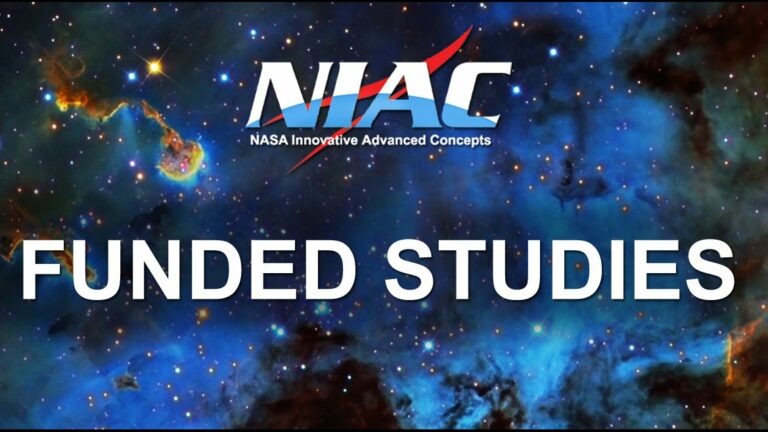NASA Picks Promising Space Technology Concepts for Further Examination
Fifteen proposals, including one from NASA’s Jet Propulsion Laboratory in Pasadena, California, have been selected by NASA for study under Phase I of the NASA Innovative Advanced Concepts (NIAC) program. This program aims to transform science fiction into reality by developing groundbreaking technologies.These chosen proposals encompass a wide range of innovative concepts that have the potential to revolutionize future aerospace missions. The development of such transformative technology holds the promise of accelerating NASA’s progress towards its goals of exploring beyond low-Earth orbit, as well as missions to an asteroid and Mars.
Steve Jurczyk, the associate administrator for the Space Technology Mission Directorate (STMD) at NASA Headquarters in Washington, expressed excitement about the latest NIAC selections. He stated that NASA is collaborating with American innovators to envision the future of aerospace and focus investments on concepts that address current challenges in space and on Earth.The NIAC Phase I awards provide approximately $100,000 to the awardees, enabling them to conduct a nine-month initial definition and analysis study of their concepts. If the feasibility studies prove successful, the awardees can then apply for Phase II awards, which provide up to $500,000 for two additional years of concept development.

Jason Derleth, the NIAC program executive, acknowledged the exceptional quality of the 2015 NIAC Phase I final candidates and the difficulty in selecting only 15 proposals. He expressed anticipation for how each new study will push boundaries and explore new approaches, highlighting the unique nature of the NIAC program.
The JPL proposal aims to develop innovative mission concepts for studying the atmospheres of Jupiter and Saturn through in-situ observations. This will be achieved by utilizing high-mobility WindBots, which harness energy from the powerful winds and magnetic fields present on these gas giants. The primary objective is to assess the feasibility of using WindBots for atmospheric science missions, which would greatly enhance our understanding of gas giants. Additionally, this study will lay the foundation for incorporating energy-harvesting techniques into the design of future planetary robots, leading to more efficient exploration. Furthermore, it will explore the potential of utilizing smaller and more cost-effective robots to establish persistent exploration and sensor networks, eliminating the need for nuclear energy.
Another proposal focuses on the use of a soft-robotic rover that can operate in environments where conventional power systems are not suitable. This rover, resembling an eel with a small antenna on its back, will derive power from local variations in magnetic fields. The objective is to enable amphibious exploration of gas-giant moons such as Europa.
In addition, one of the proposals suggests the deployment of two glider-like unmanned aerial vehicles connected by a strong cable at different altitudes. These vehicles will rely on wind shear in the lower stratosphere, similar to a kite surfer, with the upper aircraft providing lift and aerodynamic thrust while the lower aircraft counteracts downwind drift. If successful, this atmospheric satellite could remain in the stratosphere for extended periods, offering cost-effective alternatives for NASA’s Earth science missions, monitoring capabilities, and aircraft navigation compared to traditional orbital satellite networks.
The Cryogenic Reservoir Inventory by Cost-Effective Kinetically Enhanced Technology (CRICKET) proposal utilizes a unique mobility concept to investigate volatiles, such as hydrogen, nitrogen, and water, stored in permanently shadowed regions on celestial bodies. In order to search for water and other compounds in these dark areas, cost-effective robotic crawlers, hoppers, and soccer-ball style buckey-bots would be deployed on the surface. By employing multiple bots, a detailed map could be created to assist in the potential utilization of these resources.
NASA actively seeks visionary and long-term concepts for technological advancements that can benefit both current and future space missions. These projects undergo a rigorous peer-review process to evaluate their potential, technical approach, and the benefits they can offer within a reasonable timeframe. It is important to note that all concepts are in the early stages of development and encompass various technology areas, including aircraft propulsion, human life support, scientific instruments, unique robotic concepts, and other diverse technology paths necessary to achieve NASA’s strategic objectives.
By investing early and collaborating with forward-thinking scientists, engineers, and citizen inventors from across the country, NASA aims to reap technological rewards and maintain America’s leadership in the global technology economy.
The NASA Innovative Advanced Concepts (NIAC) program operates under NASA’s Space Technology Mission Directorate, which focuses on innovation, development, testing, and deployment of hardware for future NASA missions. Over the next 18 months, the directorate plans to make significant investments to address key challenges in achieving safe and cost-effective deep space exploration.
This article is republished from PhysORG under a Creative Commons license. Read the original article.
Do not forget to share your opinion with us to provide you with the best posts !




0 Comments